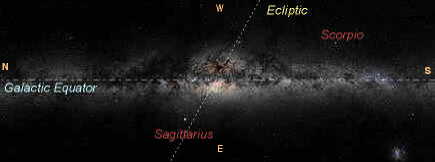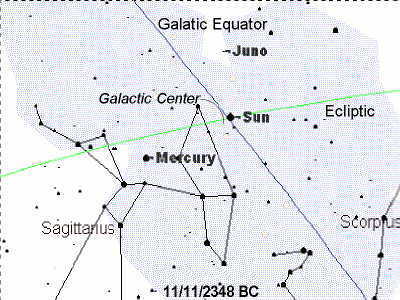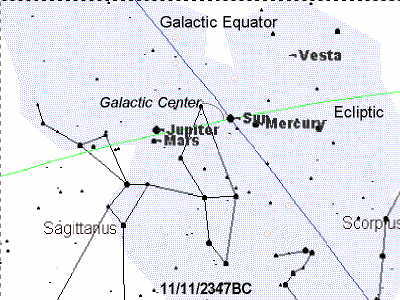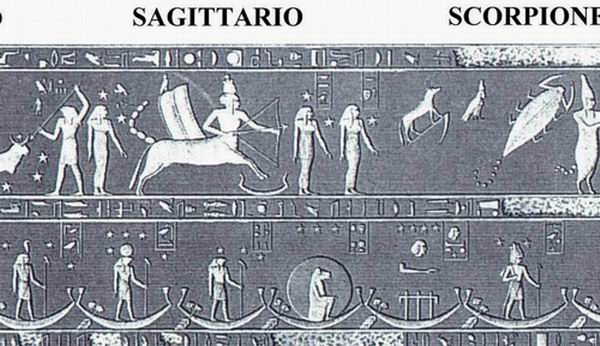|
|
The Heavenly Gate in the Apostle Peter's Last Letter
Where & When By Steve Santini September 2010 In his waning days Peter informed posterity of the nature of this world's transition into paradise. According to his second letter those days will follow the pattern of the events on the Mount of Transfiguration. In his second letter also, he informed those future faithful of the season, ie time span, in which these things are to occur. I From the scriptures Peter appears to have been the most aggressively curious and impulsively outspoken of Jesus' apostles. Because of these characteristics Jesus gave him privileges and responsibilities of leadership among the twelve apostles. In association with his Lord Jesus Christ, Peter eagerly anticipated the imminent establishment of the kingdom of God. At first, when informed by Jesus, fearful and ignorant, middle aged Peter was unwillingly to believe that Jesus was to die in Jerusalem. (Matthew 16:21-23) After Jesus' resurrection, on the day Jesus was to ascend, the apostles asked Jesus if at that time he was to restore the kingdom of God unto Israel. When they therefore were come together, they asked of him, saying, Lord, wilt thou at this time restore again the kingdom to Israel? And he said unto them, It is not for you to know the times or the seasons, which the Father hath put in his own power. Acts 1:6,7 The word know in these verses is the Greek word ginosko that is defined as to know experientially. There is another Greek word that is used often in the scriptures that means to perceive. It is oida. Jesus did not say that the apostles would be unable to mentally perceive the season during which the kingdom would be established. From the beginning, the scriptures written by Moses make it known that the lights in the heavens are for signs and seasons. And God said, Let there be lights in the firmament of the heaven to divide the day from the night; and let them be for signs, and for seasons, and for days, and years: Genesis 1:14 The Greek word for seasons is kairous both in Acts 1:7 and in the Septuagint of Genesis 1:14. In the Hebrew language the word is moed meaning appointed sacred meeting. Other Hebrew words in this family lend themselves to the meaning of a wedding feast. Certainly, no man or angel in heaven knows "the" day and hour of the meeting. (Matthew 24:36) However the scriptures never say that a man or angel cannot perceive the season or time period within which the day and hour would occur. II In his latter days, Peter had left Jerusalem where the church had turned back from maturing faith to the strangulation of corrupted law. Thus, Peter had located his ministry in Babylon with Silvanus one of the apostle Paul's former spiritual aides. (1 Peter 5:11-14) He was in Babylon where Daniel, his Hebrew kinsman, had become the third official 600 years earlier under Cyrus the Great, the Median founder of the Persian Empire. As the third official, Daniel was the captain of the ancient Magi priesthood from which Cyrus had given a number the responsibility for provincial administration within the empire. Under Daniel, Cyrus had also given the Magi the responsibility to perform the empire's most sacred annual rites. Outside of Jerusalem, in Peter's day, Babylon had the largest population of Hebrews. As citizens integrated into the Persian culture they were more broadminded than their kinsmen in Jerusalem. Their acceptance and integration was a result of the 70-year captivity and the consequent favor given to them by the Archimedean Dynasty due to the services of Daniel and the actions of Esther and Mordecai. III The subject of both of Peter's letters
is the appearing or apokalupsis. The Greek word means unveiling. In his first letter Peter writes: Wherein ye greatly rejoice, though now for a season, if need be, ye are
in heaviness through manifold temptations: That the trial of your faith, being much more precious than of gold
that perisheth, though it be tried with fire, might be found unto praise and
honour and glory at the appearing (apokalupsis) of Jesus Christ: Whom having not seen, ye love; in whom, though now ye see him not, yet
believing, ye rejoice with joy unspeakable and full of glory: Receiving the end of your faith, even the salvation of your souls. Of which salvation the prophets have enquired and searched diligently,
who prophesied of the grace that should come unto you: Searching what, or what manner of time the Spirit of Christ which was
in them did signify, when it testified beforehand the sufferings of Christ, and
the glory that should follow. Unto whom it was revealed,(apokalupto) that not unto themselves,
but unto us they did minister the things, which are now reported unto you by
them that have preached the gospel unto you with the Holy Ghost sent down from
heaven; which things the angels desire to look into. Wherefore gird up the loins of your mind, be sober, and hope to the end for the grace that is to be brought unto you at the revelation (apokalupsis) of Jesus Christ. 1 Peter 1:6-13 In his second letter Peter became more detailed pertaining to the future time ending with the glories of Christ. In his final chapter he wrote of the three heavens and earths. For this they willingly are ignorant of, that by the word of God the
heavens were of old, and the earth standing out of the water and in the water: Whereby the world that then was, being overflowed with water, perished: But the heavens and the earth, which are now, by the same word are kept in store, reserved unto fire against the day of judgment and perdition of ungodly men. 2 Peter 3:5-7 In this chapter Peter also alluded to the spiritual week of seven millennia and the final 1000-year Sabbath or day of rest for the fiathful. But, beloved, be not ignorant of this one thing, that one day is with the Lord as a thousand years, and a thousand years as one day. 2 Peter 3:8 Then he separated the day of the Lord beginning the millennial kingdom or 7th day from the day of God ending the millennial kingdom. But the day of the Lord will come as a thief in the night; in the which
the heavens shall pass away with a great noise, and the elements shall melt
with fervent heat, the earth also and the works that are therein shall be
burned up. Seeing then that all these things shall be dissolved, what manner of
persons ought ye to be in all holy conversation and godliness, Looking for and hasting unto the coming of the day of God, wherein the heavens being on fire shall be dissolved, and the elements shall melt with fervent heat? 2 Peter 3:10-12 In the Greek language the descriptions of the day of the Lord and the day of God are different. As the day of the Lord ends, the surface of the earth shall be singed to ashes while, at the end in the day of God, when the Lord Jesus Christ delivers all up to the Father, the entire earth will be incinerated. In his first chapter, Peter wrote that the power and coming of the Lord would be like the events on the Mount of Transfiguration. For
we have not followed cunningly devised fables, when we made known unto you the
power and coming of our Lord Jesus Christ, but were eyewitnesses of his
majesty. For
he received from God the Father honour and glory, when there came such a voice
to him from the excellent glory, This is my beloved Son, in whom I am well
pleased. And this voice which came from heaven we heard, when we were with him in the holy mount. 2 Peter 1:16-18 IV Peter prefaced his next statement as a prophecy "more sure" than this previous statement. He also admonished his readers to "take heed" unto this statement. We have also a more sure word of prophecy; whereunto ye do well that ye take heed, as unto a light that shineth in a dark place, until the day dawn, and the day star arise in your hearts: 2 Peter 1:19 Generally this verse has been interpreted as a metaphorical statement. It may have several words that are to be metaphorically interpreted within it, but it seems, that, as a statement so important and universally applicable within the factual proximate and remote context, it would not be left to the possible misinterpretation through an entire metaphor. The problem in part may be due to ignorance and misunderstandings by translators. There were no rules for punctuation in Greek grammar. In other words there were no periods, commas, question marks etc. Visually all the sentences and phrases ran together. Likewise there were no chapters, verses or paragraphs in the Greek texts of scripture. The translators added all of these devices according to their best understandings of the dead Greek language and its former culture at the time of their translations. This verse ends with the prepositional phrase "in your hearts." This has presented a problem for those that interpret this verse with their commentaries and lexicons. (Louw-Nida Lexicon 1.32 fwsfo,roj) When it is understood that this verse is not entirely metaphorical the apparent choice in translation is to place the phrase in your hearts at the beginning of the next verse. In your hearts, knowing this first, that no prophecy of the scripture is of any private interpretation. 2 Peter 1:20 Another part of the problem with the standard
translations of this verse is the fact that one word in the Greek language was
left unaccounted for in the English translations. That Greek word is ou. It means where. In the Greek
texts according to Bible Works for Windows this word is present and it is given
a Strong"s Concordance number in the King James Version with codes. STE 2 Peter 1:19 kai. e;comen bebaio,teron
to.n profhtiko.n lo,gon w-| kalw/j poiei/te prose,contej w`j lu,cnw| fai,nonti
evn auvcmhrw/| to,pw| e[wj ou- h`me,ra diauga,sh| kai. fwsfo,roj avnatei,lh| 2 Peter 1:19 19
We have <2192> (5719) also <2532> a more sure <949>
word <3056> of prophecy <4397>; whereunto <3739> ye do
<4160> (5719) well <2573> that ye take heed <4337> (5723), as
<5613> unto a light <3088> that shineth <5316> (5730) in
<1722> a dark <850> place <5117>, until <2193> <3757>
the day <2250> dawn <1306> (5661), and <2532> the day star
<5459> arise <393> (5661) 3757 ou- hou {hoo} Meaning: 1) where Origin: genitive case of 3739 as adverb;; pron Usage: AV - where 22, whither 2, when 1, wherein 1, whithersoever + 1437 1; 27 (Bible Works for Windows 1998/2000) A translation that includes the where and places in your hearts in the next verse would read. We have also a more sure word of prophecy; whereunto ye do well that ye take heed, as unto a light that shineth in a dark place, until where the day dawn, and the day star arise: 2 Peter 1:19 In verse 19, Peter was pointing to a location where to take heed as a more sure word of prophecy. An observation of the words he used would indicate that this place is in the celestial sphere. According to the Henry George Liddell, Robert Scott, Greek-English Lexicon six words in this verse have definitions that contain specific references to the sun, the moon, the planets, the constellations and/or the zodiac. They are: phaino/shinneth, topos/place, hemera/day, diaugazo/dawn, phosphorus/day star, and anatello/arise. In addition, all of the Aramaic translations have the Aramaic word underlying "day star" translated rather as "sun". From Peter"s knowledge that the Mount of Transfiguration occurred on the winter solstice and that other significant scriptural events occurred on that date or on another date when the sun was in the golden gate, he seems to be referring to the place as the alignment of the sun at the intersection of the ecliptic and the galactic equator over the galactic center. The words diaugazo and auxmeros especially lend themselves to this perception. The word diaugazo translated dawn has more specific definition than dawn. It means to break across as the sun would break across an opening in a clouded sky. The word auxmeros means dusty much more so than dark. In the context of the celestial sphere, its usage as an adjective modifying a place or topos in the heavens is revealing. There is one place in the heavens that has always been known as a dusty place. That is the area of interstellar gas and cosmic dust of the Milky Way visually obscuring the galactic center. On very clear, dry and dark nights this dust and gas can be seen with the naked eye from earth within the band of the Milky Way in front of the glowing galactic center. In the Old Testament there is a Hebrew word for this cloud of cosmic dust highlighted by the radiant galactic center. It is shachaq . This word is used 21 times in scripture and is translated as cloud, sky, heaven, and small dust. It is often used in conjunction with shamayim, the Hebrew word translated 398 times as heaven. (Psalms 36:5, 78:23, Jeremiah 51:9)
Even today astronomers refer to elements visually obscuring the galactic center as dust.
At the position of the golden gate marked by the galactic center between Sagittarius and Scorpio, there is an opening in this dust- laden area like a gulf. The sun crosses over and becomes aligned with this opened area each year on an incrementally earlier time each successive year due to progression. In these present years the sun crosses over this opened gulf in the comic dust of the Milky Way during the winter solstice. V
The alignment of the sun with the golden gate of heaven was an important celestial marker, if not the most important, for the ancient Easterners, especially the Hebrews. The veil of Herod"s temple was made in Babylon of its finest linen according to that day's historian, Josephus. He wrote that it contained all that was mystical in the heavens without the depiction of the animals of the zodiac. Before these(doors) hung a veil of equal length, of
Babylonian tapestry, with embroidery of blue and fine linen, of scarlet also
and purple, wrought with marvelous skill. Nor was this mixture of materials
without its mystic meaning: it typified the universe. For the scarlet seemed
emblematical of fire, the fine linen of the earth, the blue of the air, and the
purple of the sea; the comparison in two cases being suggested by their colour,
and in that of the fine linen and purple by their origin, as the one is
produced by the earth and the other by the sea. On this tapestry was portrayed
a panorama of the heavens, the signs of the Zodiac excepted. . . . (J.W. 5.5.4 �211�5.5 �219 LCL)9 With consideration for their regard for the Milky Way and galactic center, what was mystical, without the figures of the zodiac, could have been a portrayal of the milky way and the galactic center or even galactic alignment as seen looking south down the Jordan River Valley. If the depiction was one including the galaxy as mystically central, then one sybolically prophetic event at the expiration of Jesus becomes dynamically interesting. At the moment that Jesus gave up his life on the cross the temple veil was centrally riven apart from top to bottom. (Mark 15:38) VI By giving dates for the beginning and end of the flood of Noah, Moses highlighted the sun and galactic center. With this understanding, Jesus, himself, made the Hebrews aware that the time leading up to the transition into the kingdom of God on earth would be similar to the times of Noah during the last days of the first heaven and earth. For as the lightning, that lighteneth out of the one part under heaven,
shineth unto the other part under heaven; so shall also the Son of man be in
his day. But first must he
suffer many things, and be rejected of this generation. And as it was in the days of Noe, so shall it be also in the days of
the Son of man. They did eat, they drank, they married wives, they were given in marriage, until the day that Noe entered into the ark, and the flood came, and destroyed them all. Luke 17:24-27 Why? And GOD saw that the
wickedness of man was great in the earth, and that every imagination of the
thoughts of his heart was only evil continually. And it repented the
LORD that he had made man on the earth, and it grieved him at his heart. And the LORD said, I
will destroy man whom I have created from the face of the earth; both man, and
beast, and the creeping thing, and the fowls of the air; for it repenteth me
that I have made them. But Noah found grace in the eyes of the LORD. Genesis 6:5-8 Paul also highlighted Noah in Hebrews, the instruction book for the transition into the millennial kingdom But without faith it is impossible to please him: for he that cometh to
God must believe that he is, and that he is a rewarder of them that diligently
seek him. By faith Noah, being warned of God of things not seen as yet, moved with fear, prepared an ark to the saving of his house; by the which he condemned the world, and became heir of the righteousness which is by faith. Hebrews 11:6,7 Peter wrote of Noah in each of his two letters. Which sometime were disobedient, when once the longsuffering of God waited in the days of Noah, while the ark was a preparing, wherein few, that is, eight souls were saved by water. 1 Peter 3:20 And spared not the old world, but saved Noah the eighth person, a preacher of righteousness, bringing in the flood upon the world of the ungodly; 2 Peter 2:5 Moses wrote down the first oracles as the book of Genesis. In it he was quite specific as to the date upon which the waters from heaven and the great deep began and ended In the six hundredth
year of Noah's life, in the second month, the seventeenth day of the month, the
same day were all the fountains of the great deep broken up, and the windows of
heaven were opened. And the rain was upon the earth forty days and forty nights. Genesis 7:11,12 Moses also gave the date when the water had dried up from the earth so that Noah and his family could leave the ark. And in the second month, on the seven and twentieth day of the month,
was the earth dried. And God spake unto Noah, saying, Go forth of the ark, thou, and thy wife, and thy sons, and thy sons' wives with thee. Genesis 8:14-16 EW Bullinger, the honored 19th century British biblical scholar and textual critic, wrote in his Companion Bible that the flood lasted one solar year. In the Companion Bible he and his associates also presented a detailed biblical chronology that was developed by researching, from within the scriptures, lineages with dates of birth and dates of deaths and dates of events within the lives of biblical persons. In this chronology the flood year is dated at 2348 to 2347BC. The day in which the flood commenced in 2348BC on the second month, the seventeenth day of the month is dated as November 11th on the Gregorian Calendar according to the appropriate observations of Celestron's The Sky and Starry Night's astronomical software. On that date the sun was in galactic alignment with the galactic center.
The next verse says that the rain was upon the earth forty days and forty nights. That means that the rain ended on the winter solstice of 2348BC. Because Moses recorded the dates according to the lunar calendar rather than the Gregorian solar calendar, the drying of the earth that finished on the second month, on the seven and twentieth day of the month also fell on November 11th in the subsequent year. The sun was also in the golden gate of heaven on November 11th on that year of 2347 BC as it would have been in that time on Nov 11th for a span of about 72 years like it is now in such a span on the winter solstice.
The lineage of Egyptian priest who served in the ancient Temple of Hathor in Dendera knew the importance of the sun's position in the golden gate of heaven. They, on the ceiling, sculpted into stone, placed the sun beneath the golden gate in their two course linear zodiac. The lower course of the gods contains this singular position of the sun below and between the signs of Sagittarius and Scorpio. Here, Set, the Egyptian god of the hot destructive desert winds and chaos sits, depicted as a male hippopotamus, in the solar bark of Ra. This theme corresponds to the biblical prophecies of the times leading into the new paradise upon this earth. It is written that these times will be ones of inflamed wrath from which those of faith in the Lord Jesus Christ will be the first to be saved.
The earliest Christians also recognized the historical importance of the sun's position November 11th, 2348/49 BC in regards to the second coming of Christ. This 40-day time period from November 11th till December 21st was eventually institutionalized with successive modifications by the Eastern churches and some Western sects as the Advent Season. VII After Jesus informed his apostles that his second coming would be in a time like the days of Noah, he informed them it would be of a character like Lot's deliverance from Sodom and Gomorrah. Likewise also as it was in the days of Lot; they did eat, they drank,
they bought, they sold, they planted, they builded; But the same day that Lot went out of Sodom it rained fire and brimstone
from heaven, and destroyed them all. Even thus shall it be in the day when the Son of man is revealed. Luke 17:28-30ff Moses' Genesis record of Lot's deliverance from the destruction of Sodom and Gomorrah is factual and is a symbolic pattern of future deliverance away from the wrath prophesied to come. (Genesis 19) Angels came to warn and remove Lot and his family from the impending destruction of Sodom. Lot, his wife and two unmarried daughters believed the angels. As they departed, the four were told not to look back. As Sodom was being destroyed, Lot's wife lingered behind and looked wistfully back. She was vaporized into a pile of body salts. Lot and his daughters hid in a cave in the ground. Lot was figuratively resurrected through his impregnation of his two daughters. In the Roman letter, Paul also likened the finishing work of His one body to the time of Sodom and Gomorrah's destruction. Even us, whom he hath called, not of the Jews only, but also of the
Gentiles? As he saith also in Osee, I will call them my people, which were not my
people; and her beloved, which was not beloved. And it shall come to pass, that in the place where it was said unto
them, Ye are not my people; there shall they be called the children of the
living God. Esaias also crieth concerning Israel, Though the number of the children
of Israel be as the sand of the sea, a remnant shall be saved: For he will finish the work, and cut it short in righteousness: because
a short work will the Lord make upon the earth. And as Esaias said before, Except the Lord of Sabaoth had left us a seed, we had been as Sodoma, and been made like unto Gomorrha. Romans 9:24-29 Peter also referred to Lot and Sodom and Gomorrah in his second letter. And turning the cities of Sodom and Gomorrha into ashes condemned them
with an overthrow, making them an ensample unto those that after should live
ungodly; And delivered just Lot, vexed with the filthy conversation of the
wicked: (For that righteous man
dwelling among them, in seeing and hearing, vexed his righteous soul from day
to day with their unlawful deeds;) The Lord knoweth how to deliver the godly out of temptations, and to reserve the unjust unto the day of judgment to be punished: 2 Peter 2:6-9 At the end of his final letter, Peter informed his readers that the things he was writing corresponded to the writings of Paul. And account that the longsuffering of our Lord is salvation; even as our
beloved brother Paul also according to the wisdom given unto him hath written
unto you; As also in all his epistles, speaking in them of these things; in which are some things hard to be understood, which they that are unlearned and unstable wrest, as they do also the other scriptures, unto their own destruction. 2 Peter 3:15,16 Peter's revelation in 2 Peter 1:19 is a pivotal point in scripture as an admonition for the future faithful. We have also a more sure word of prophecy; whereunto ye do well that ye take heed, as unto a light that shineth in a dark place, until where the day dawn, and the day star arise: 2 Peter 1:19 It is also seems now a practical pivotal point for the faithful in Christ Jesus and those to become faithful in Christ Jesus. As always, it is the time to cleave unto the words of Jesus, the apostle and prophet Peter and the holy apostle and prophet Paul. They, with love and faith and hope, spoke to this generation, so that the completing remnant of faith would be saved. For those of faith it is a comfort to look up and sense that this present corrupted world has a just and loving end and a new beginning with a heaven and earth wherein righteousness dwells. For
the earnest expectation of the creation waiteth for the manifestation of the
sons of God. For
the creation was made subject to vanity, not willingly, but by reason of him
who hath subjected the same in hope, because the creation itself also shall be
delivered from the bondage of corruption into the glorious liberty of the
children of God. For
we know that the whole creation groaneth and travaileth in pain together until
now. And
not only they, but ourselves also, which have the firstfruits of the Spirit,
even we ourselves groan within ourselves, waiting for the adoption, to wit, the
redemption of our body. For
we are saved by hope: but hope that is seen is not hope: for what a man seeth,
why doth he yet hope for? But if we hope for that we see not, then do we with patience wait for it. Romans 8:19-25 Galactic Alignment and Christ: Series End The Series: Galactic Alignment And Christ And Enoch also, the seventh from Adam, prophesied of these, saying Behold, the Lord cometh with ten thousands of his saints, Jude 14 For he will finish the work, and cut it short in righteousness: because a short work will the Lord make upon the earth. Romans 9:28 |





